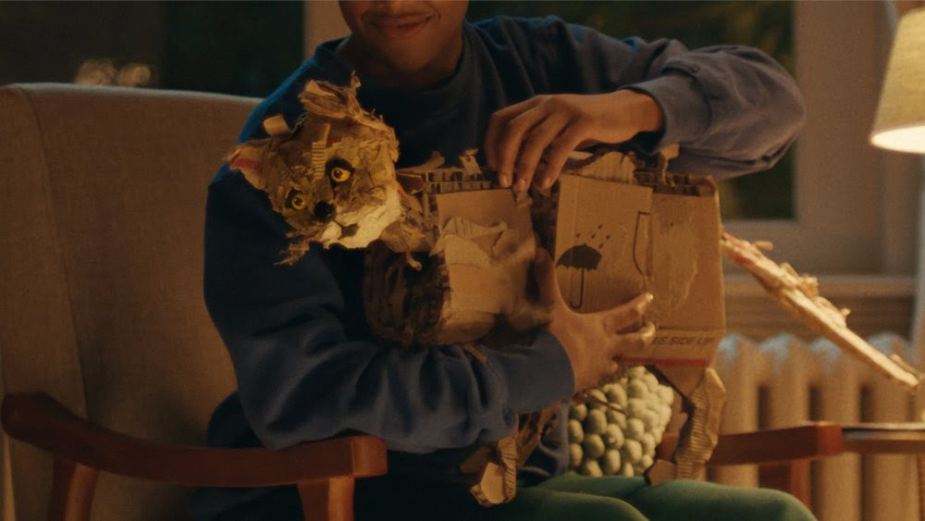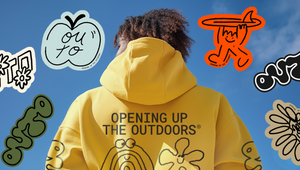
How Cardboard Pets Came to Life with Edgard & Cooper

It’s important to be conscious of what you eat and how it impacts you in daily life. The same goes for your pets – quality is a priority when it comes to feeding your furry friends. At least, that’s what pet food brand Edgard & Cooper are keen to highlight in its latest campaign.
Working alongside the Amsterdam based agency WE ARE Pi, the brand showed its commitment to junk free pet food by taking ‘you are what you eat’ to the next level. As pet owners dish out cardboard food to their cats and dogs, they become cardboard themselves. With an eerie sense of emptiness brought on by the still, emotionless, cardboard pets, as well as the contrast with other live animals, the benefits of quality produce become apparent.
Speaking to LBB’s Nisna Mahtani, WE ARE Pi’s co-founder and executive creative director Rick Chant explains what it was like to work with animals, see a master puppet creator create inanimate versions of pets and why the team smeared peanut butter on the rear end of a cardboard animal.
LBB> When was the idea of cardboard pets first discussed and how did it fit into the brief given by the client?
Rick> The idea of feeding fake food to fake pets was one of many ideas first introduced at the concept stage as a response to the strategy based around ‘actual food for pets’. The amazing collaborative and creative team at Edgard & Cooper were quick to respond to this take on the strategy. Their direct decision-making coupled with the creative freedom to explore was a key to success. The cardboard version of the pets was one of many explorations from the team and is linked to the beige nutritional value of most of the pet food out there.
LBB> Tell us about the process of creating each cardboard pet. How long did it take, what materials did you use and who was behind the design?
Rick> This was the exquisite work of puppet master extraordinaire Eva Arends under the direction of Pedro Giomi and the team at Czar. There was lots of experimentation, trials and errors and a lot of the success was down to alignment across the whole team. Everyone from production, agency and client were all happily squeezed into the same vehicle with their collective foot pressed hard on the accelerator travelling at breakneck speed to success.
LBB> Having real, live animals next to those which were created out of cardboard and scraps provides a real contrast. Can you tell us a little bit about executing those shots?
Rick> A favourite memory is finding the right amount of peanut butter to smear on the rear end of a fake dog to attract the tongue of a real dog. Removing the tongue was a different story altogether.
LBB> How long did it take to shoot and were there any challenges you faced throughout the process?
Rick> An ambitious one-day shoot and a very streamlined process of decision-making between production, agency and clients. The challenges were in shooting the real animals in our tight schedule. You can never predict how many takes animals need before you can move on to the next scene.

LBB> In terms of Edgard & Cooper, how did this spot align with the brand’s values and vision for the future?
Rick> Edgard & Cooper aim to banish ‘Junk Free’ pet food, food that is made of low quality ingredients mixed with preservatives. It’s a company policy that has origins with its founder’s pets, Edgard and Cooper, two dogs with digestive issues caused by low quality, junk food. We’re happy to be banging the drum and rattling the bowl to cause awareness among other pet owners around the issue.
LBB> The campaign is showing across a few different markets, how did you keep an international audience in mind when creating the spot?
Rick> Borderless ideas are in our DNA. Ideas that can travel: navigate languages and cross cultures and resonate with different people in different places. These types of ideas are usually based on a truthful human or in this case animal insight and executed visually.
LBB> Talk to us about the song choice. How did you land on it and were there any other contenders in the mix?
Rick> As with every piece of creative we encourage experimentation. In this case, every genre was tried against storyboards, crapomatics and edits. Tuvan throat singing, hick hop and splittercore came close but nothing topped the emotional pull of the ‘80s melted cheeseballad.
LBB> Were there any unexpected, funny or disastrous moments that came out of working with animals on set?
Rick> Letting a mouse tease our fake cat was funny, but the amount of creative discussion between all parties on set on how the real dog is supposed to sniff the rear end of a fake one is definitely one for the books.













